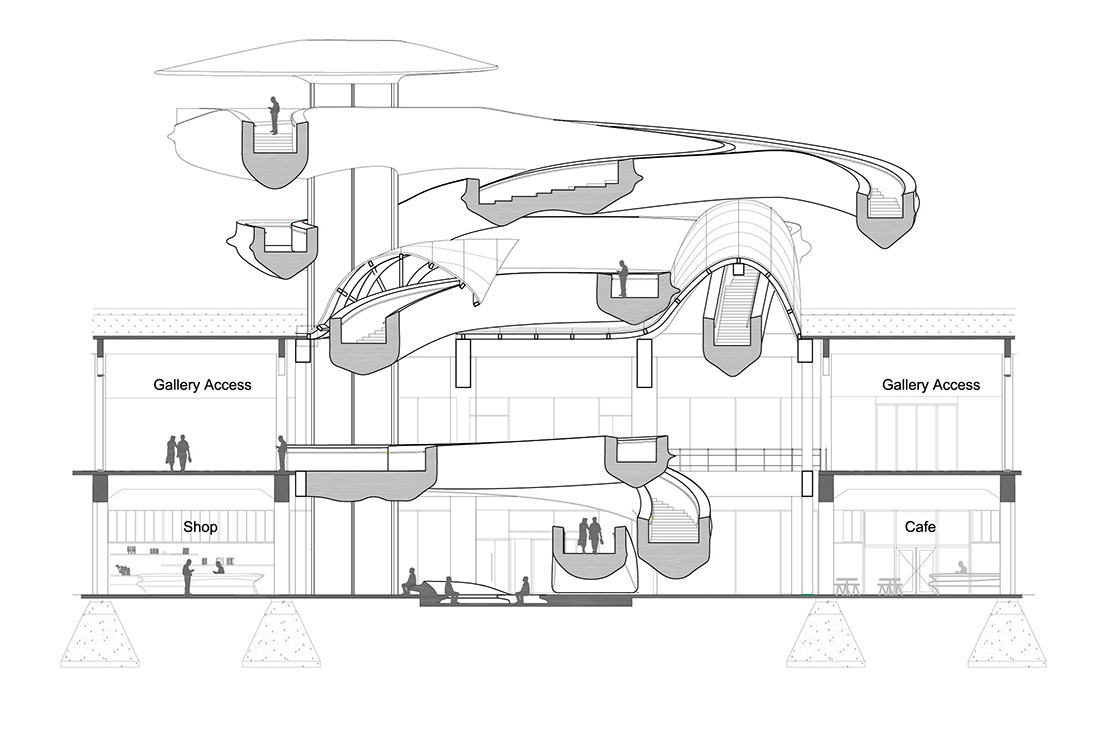Work to renovate a historical concrete warehouse into the FENIX Museum of Migration, in Rotterdam, Netherlands, has begun. When completed, the museum will boast dueling spiral staircases that climb from the ground floor of the museum to a 28.3 m high observation deck with panoramic views of the surrounding area.
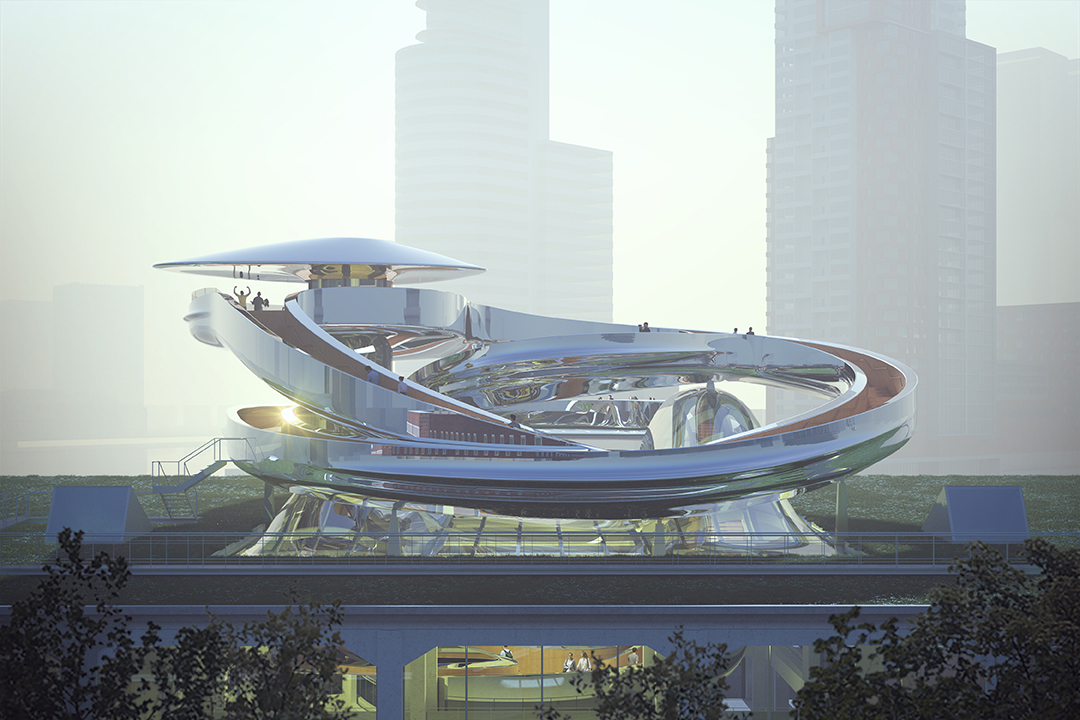
The historic Fenix warehouse, located on the city’s Katendrecht peninsula along the river Maas, is becoming the museum’s home. Built in 1923, the warehouse was once the largest in the world. It was damaged during World War II and underwent a series of repairs in the following decades.
The Fenix warehouse was chosen as the site for the museum to highlight the millions of Europeans who migrated from the banks of the Maas, many of whom were traveling to Ellis Island in New York Harbor, according to the museum’s website.
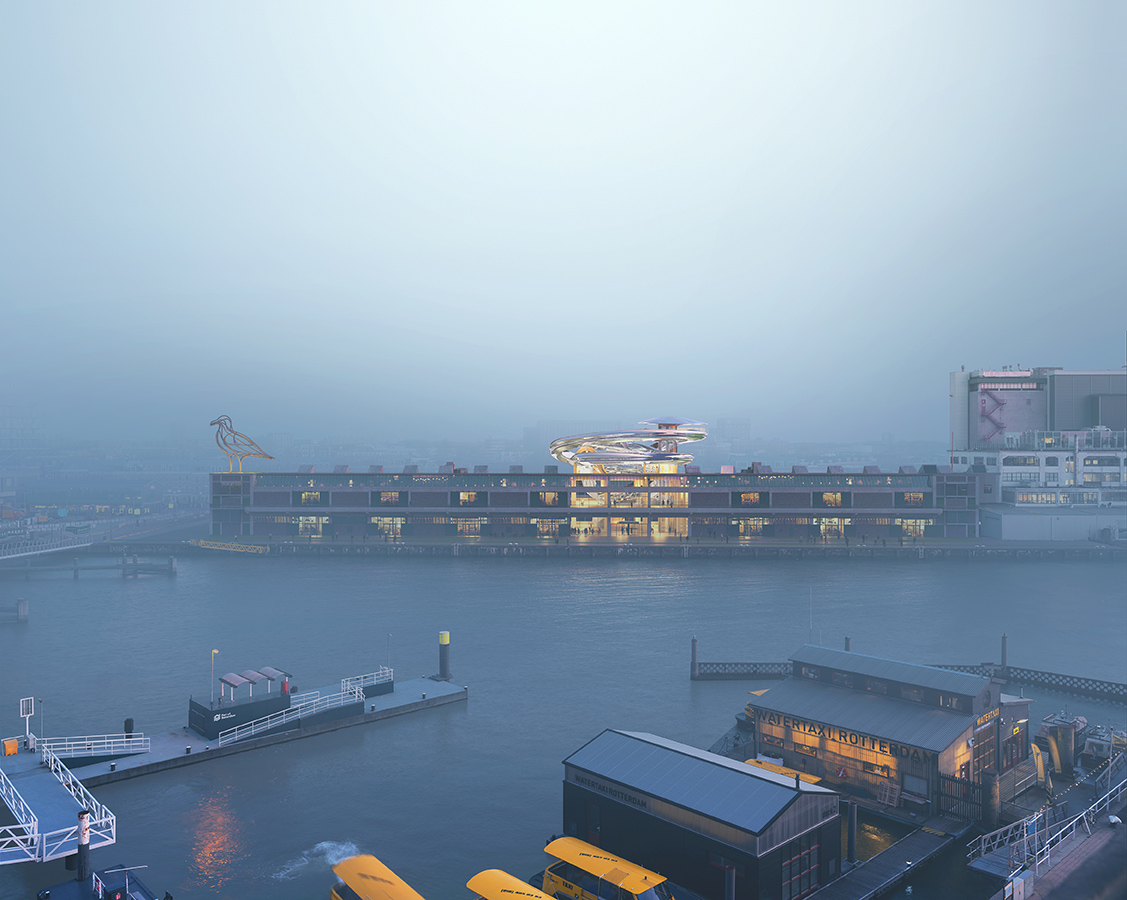
The Chinese architectural agency MAD Architects is designing the new project’s stairway and observation deck. The work was commissioned by the Rotterdam-based Droom en Daad Foundation, which is dedicated to funding art and cultural projects within the city. MAD was chosen to honor the peninsula’s forgotten history as one of the oldest Chinatowns in Europe, according to the museum.
The warehouse’s iconic green steel windows will be renovated and retained, but its existing facade and roof are being removed and replaced with glass curtain walls and ceilings. The museum’s extensive glazing will create multiple ways to view its stairway centerpiece, dubbed the Tornado.
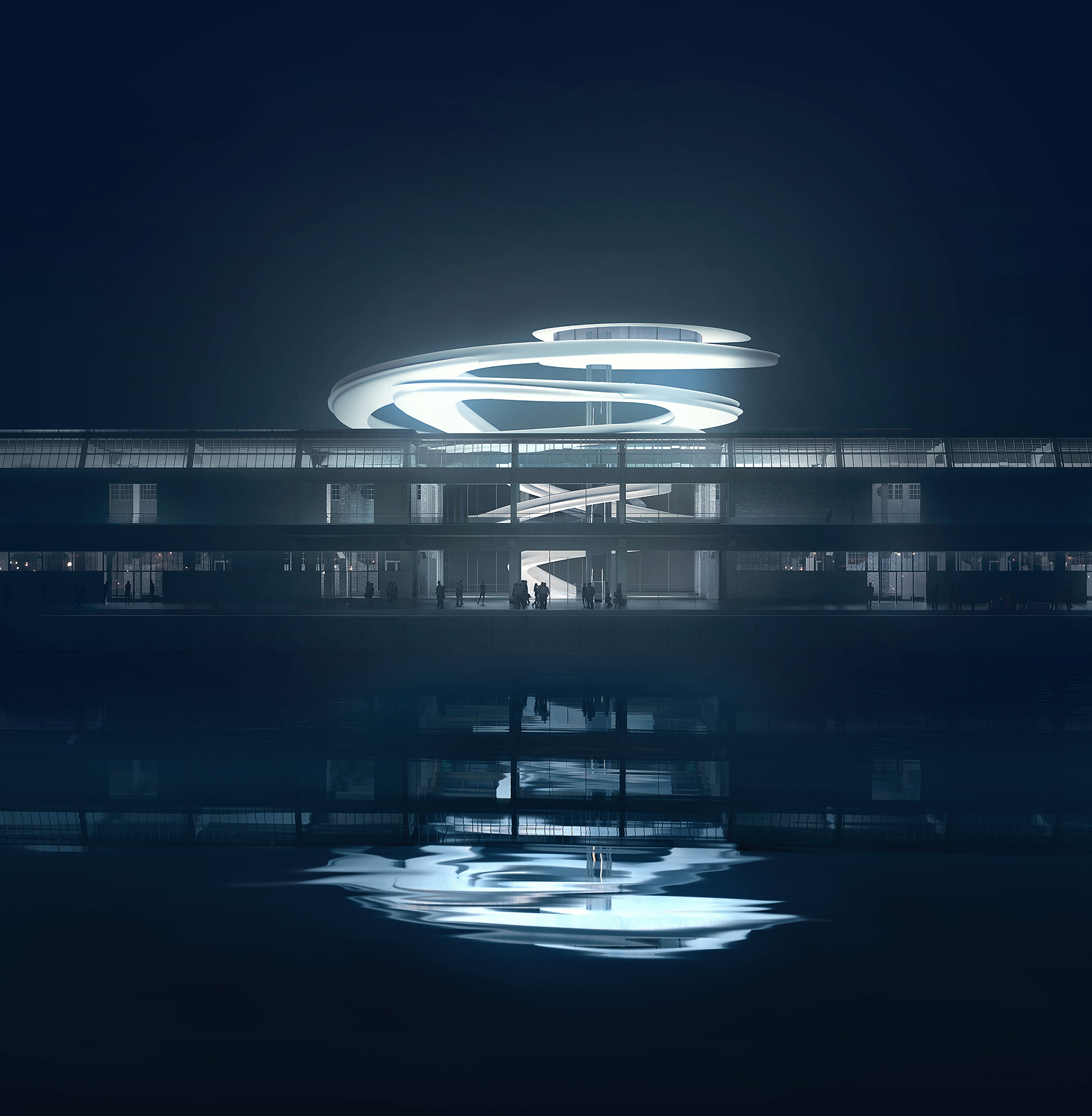
“From a distance, the platform and staircase look like a single entity, but when it’s in front of you, it stands as a sculptural work that invites you to explore,” says Ma Yansong, the founder of MAD. “It both signifies the Fenix’s witnessing of Europe’s history of migration from the port and symbolizes the future of the city.” The steel and wood that will be used for the staircase are intended to evoke the experience of boarding a ship via a gangplank.
Two structural systems were investigated for the Tornado, according to the architects, who sent written responses to questions posed by Civil Engineering. The structural systems considered included a steel space frame with rigid connections that would be covered with cladding or the use of a monocoque, or unibody, system with a structural skin. The space frame option “was chosen because of the high demand and complexity of the surface: the space frame system allows the handrails to work as trusses, and below the deck that (system) provides torsional stiffness,” the architects say. “Then a stainless steel cladding wraps around the space frame, creating the continuity of the staircase.”
The stairways will be structurally independent of the existing warehouse building. The design team considered coupling the stairways with the existing warehouse but decided against it. “Strengthening the building to be able to transfer the wind forces (from the observation deck and stairways) would have (had) a very large impact, which was not in line with the idea of conservation and respect of the existing building,” the architects explained.
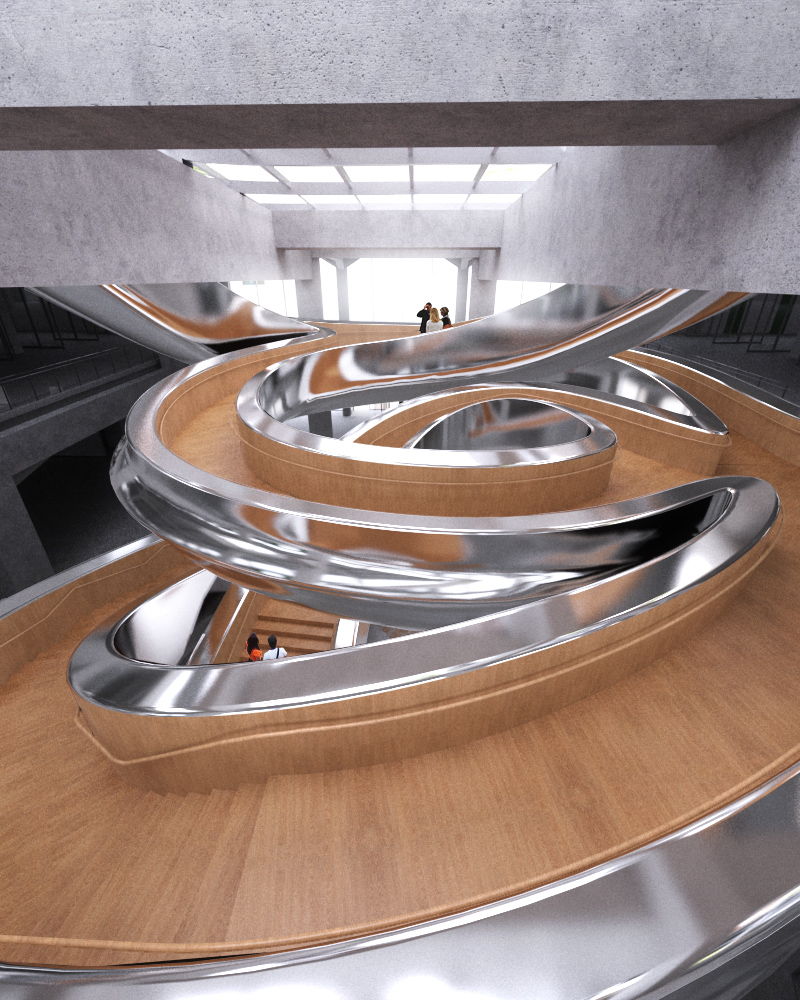
“The main design challenge was to keep the slender and weightless appearance of the Tornado, ensuring the necessary space and dimensions for the structural frame and giving the idea of a floating, intertwined element without any evident intermediate support,” the architects say. The design calls for the stairs’ new structural steel frame to be placed beside and in the same grid alignment as the existing concrete columns in what will become the museum’s central lobby. In addition, a new elevator core is being built within the center of the Tornado. This core will also offer some support and anchor points as the stairways wrap around it, according to the architects.
At the point where the stairways transition from interior to exterior, the design team created a curved glass roof transition that resembles a wave, according to the architects. The glass wave will also act as the ceiling for a portion of the lobby, “creating a visual connection to the outside and blurring the boundary between interior and exterior,” the architects say. The steel frame will support this glass roof with relatively small supports and arches that have been integrated into the design such that they are barely visible, according to the architects.
The museum is expected to be complete in 2024.
Project Credits:
Client: Droom en Daad Foundation Executive architect: EGM Stairway architect: MAD Architects Monumental architecture renovation: Bureau Polderman Construction adviser: IMd Raadgevende Ingenieurs Steel constructor: CSM Steelstructures Cladding constructor: Central Industry Group Lighting consultant: Beersnielsen lichtontwerpers Installation design: Bosman Bedrijven Installation adviser: DWA Building physics adviser: LBP Sight
